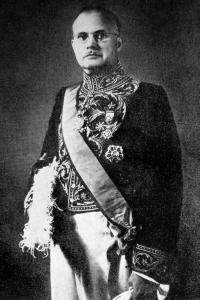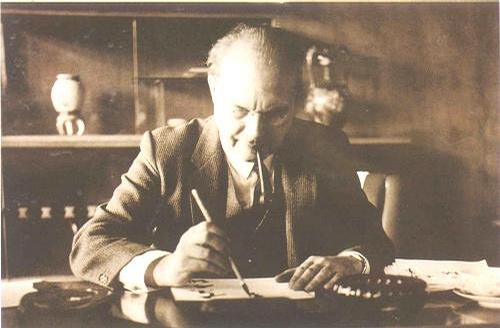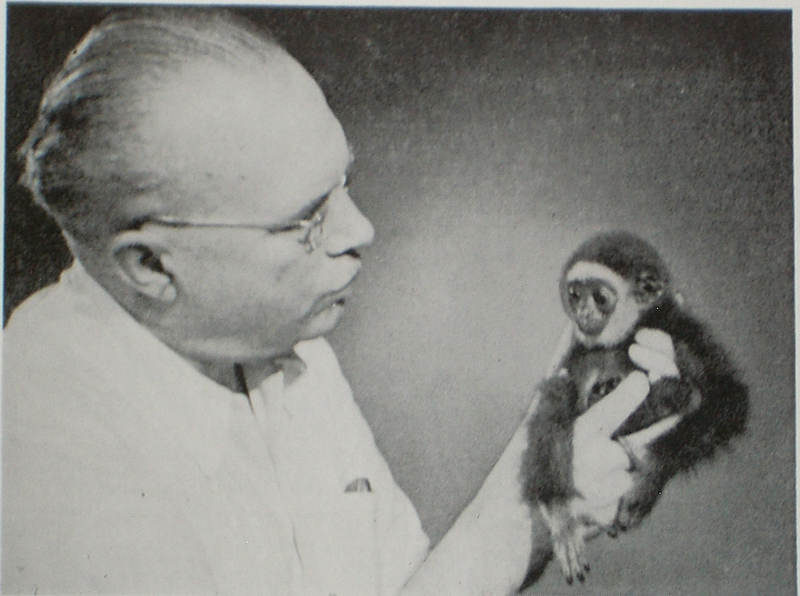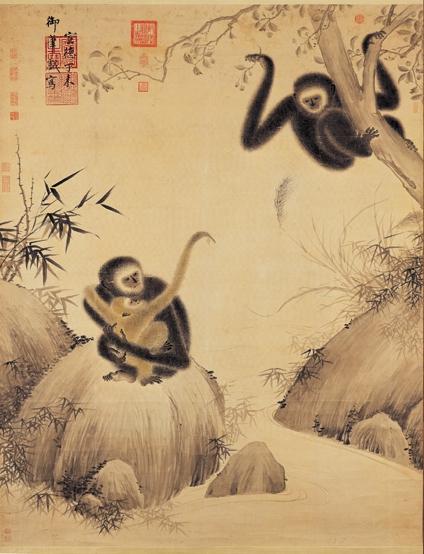<Back to Index>
- Physicist Erich Armand Arthur Joseph Hückel, 1896
- Orientalist, Diplomat and Writer Robert Hans van Gulik, 1910
- Prime Minister of the Netherlands Johannes Marten den Uijl (Joop den Uyl), 1919
PAGE SPONSOR


Robert Hans van Gulik (髙羅佩) (August 9, 1910, Zutphen - September 24, 1967, The Hague) was a highly educated orientalist, diplomat, musician (of the guqin) and writer, best known for the Judge Dee mysteries, the protagonist of which he borrowed from the 18th century Chinese detective novel Dee Goong An.
Van Gulik was the son of a medical officer in the Dutch army of what was then called the Dutch East Indies (modern - day Indonesia). He was born in the Netherlands but from the age of three till twelve he lived in Batavia (now Jakarta) where he was tutored in Mandarin and other languages. He went to the University of Leyden in 1934 and obtained his Ph.D in 1935. His talents as a linguist suited him for a job in the Dutch Foreign Service which he joined in 1935 and he was then stationed in various countries, mostly in East Asia (Japan and China).
He was in Tokyo when Japan declared war on the Netherlands in 1941 but he, and the rest of the Allied diplomatic staff, were evacuated in 1942. He spent most of the rest of World War II as the secretary for the Dutch mission to Chiang Kai-shek's Nationalist government in Chongqing. While in Chongqing he married a Chinese woman (Shui Shifang), the daughter of an Imperial mandarin (under the Manchu Dynasty). Together they had four children.
After the war ended, he returned to the Netherlands then went to the United States as the Councillor of the Dutch embassy in Washington, D.C..
He returned to Japan in 1949 and stayed there for the next four years.
While in Tokyo he published his first two books, the translation of Celebrated Cases of Judge Dee and a privately published book of erotic colored prints from the Ming dynasty. Later postings took him all over the world from New Delhi, Kuala Lumpur, Beirut (during the 1958 Civil War) to The Hague. From 1965 until his early death from cancer in 1967 he was the Dutch ambassador to Japan. During World War II Robert van Gulik translated the 18th century detective novel Dee Goong An into English under the title Celebrated Cases of Judge Dee (first published in Tokyo in 1949). The main character of this book, Judge Dee, was based on the real statesman and detective Di Renjie who lived in the seventh century during the Tang Dynasty (A. D. 600 - 900), though in the novel itself elements of Ming Dynasty China (A. D. 1300 - 1600) were mixed in. Thanks
to his translation of this largely forgotten work, van Gulik became
interested in Chinese detective fiction and he decided to attempt one
himself. His first attempt, The Chinese Maze Murders, was written from 1948 - 1950 and "borrowed" Judge Dee and his assistants from Dee Goong An. His intent in writing this first Judge Dee novel was, as he wrote in remarks on The Chinese Bell Murders,
"to show modern Chinese and Japanese writers that their own ancient
crime - literature has plenty of source material for detective and
mystery - stories" Van Gulik's Judge Dee mysteries follow the long tradition of Chinese Detective fiction,
intentionally preserving a number of key elements of that writing
culture. Most notably he had Judge Dee solve three different (and
sometimes unrelated) cases, a traditional device in Chinese mysteries. The whodunit element
is also less important in the Judge Dee stories than it is in the
traditional Western detective story, though still more so than in
traditional Chinese detective stories. Robert van Gulik studied Indisch Recht (Dutch - Indies law) and Indologie (Indonesian culture) at Leiden University
from 1929 until 1934, receiving his doctorate for a dissertation on the
horse cult in Northeast Asia. Though he made his career in the Netherlands diplomatic
service, he kept up his studies. During his life he wrote twenty - odd
essays and monographs on various subjects, mainly but not exclusively on
aspects of Chinese culture. Typically, much of his scholarly work was
first published outside of the Netherlands. In his lifetime van Gulik was recognized as a European expert on Imperial Chinese jurisprudence. Van
Gulik was quite interested in Chinese painting. For example, in his
book "Gibbon in China" (1967), he devotes quite a few pages to the gibbon - themed paintings in China in Japan, from the Northern Song Dynasty on.
Analyzing the portrayal of these apes throughout history, he notes how
the realism of the pictures deteriorated as the gibbon population in
most of China was extirpated. As an art critic, he greatly admired the
portrayal of the apes by such renowned painters as Yi Yuanji and Muqi Fachang. Commenting on one of Ming Emperor Xuande's
works, "Gibbons at Play", Robert van Gulik says while it is "not a
great work of art", it is "ably executed". The life - like images of the
apes make one surmise that the emperor painted from the live models that
could have been kept in the palace gardens. In
1956, the author published a translation of the "T'ang - yin - pi - shih"
(Parallel Cases from under the Pear Tree), a 13th century case book for
district magistrates. He used many of the cases as plots in his novels.
(Confirmed in the Postscripts of his novels.) The author, having finished the translation of the story Celebrated Cases of Judge Dee around 1948, included an essay on the largely forgotten genre of
Chinese detective stories. He suggested in his afterword that it was
easy to imagine re-writing some of the old Chinese case histories with
an eye towards modern readers. Not long after he published Celebrated Cases of Judge Dee, van Gulik himself tried his hand at creating a detective story based on
some older Chinese case histories. This became the book The Chinese Maze Murders (completed
around 1950). As van Gulik thought the story would have more interest
to Japanese and Chinese readers, he had it translated into Japanese by a
friend (finished in 1951) and it was sold in Japan under the title
"Meiro - no - satsujin". With the success of the book, van Gulik embarked on
translating the book into Chinese. The translation was published by a Singapore book publisher in 1953. The reviews were good and van Gulik wrote two more books (The Chinese Bell Murders and The Chinese Lake Murders) over the next few years, also with an eye towards Japanese and then Chinese editions. After
all this work was done, van Gulik found a publisher for English
language versions of these stories and the first English language book
was published in 1957. Later books were written and published in English
first, the translations came afterwards.

